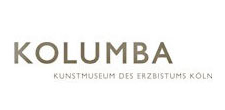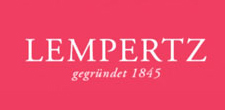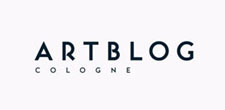EDITORIAL #59
15 YEARS D♥C

Es ist Samstagabend, der 30. August 2008, als die Düsseldorfer Galeriensprecher Michael Cosar und Alexander Sies im Skulpturenpark Köln ihren Sprecherkolleginnen und -kollegen Linn Lühn und Thomas Rehbein aus Köln erklären, wie sie sich die Saisoneröffnung des Kunstherbstes für Düsseldorf wünschen: ganz ähnlich wie der Abend im Park, wo seit längerem erstmals wieder 500 Gäste, Sammler, Kuratoren und Künstler zusammen ein Dinner feiern – das erste seit einiger Zeit, da der Boom des Berliner Kunstmarkts alle im Rheinland irgendwie fast gelähmt hatte. „Könnten wir doch auch ab dem nächsten Jahr zusammen organisieren“, heißt es dann. Erst ein Schmunzeln, dann Nachdenken, und aus der Idee wird ein Plan. Die Vernunftehe hält. Heute, 2023, sind es 15 Jahre „Düsseldorf Cologne Open Galleries“, kurz DC Open, mit einem gemeinsamen Programm und einem Fest, das zwischen den beiden Stadtregionen pendelt.
It is a Saturday evening, August 30, 2008, when, in the Skulpturenpark Köln, the Düsseldorf gallery spokespersons Michael Cosar and Alexander Sies explain to their colleagues Linn Lühn and Thomas Rehbein from Köln how they envision the opening event of the fall Düsseldorf art season. It should be just like an evening in the park, where 500 guests, collectors, curators, and artists could celebrate together with a dinner. It would be the first such event in a long while, ever since the Berlin art market boom had managed to nearly paralyze everyone in the Rhineland. “Couldn’t we do it together from next year on?” they propose. First, a chuckle, then, with further reflection, the idea becomes a plan. It’s the marriage of convenience that lasts. Today, in 2023, it’s been 15 years of “Düsseldorf Cologne Open Galleries,” or DC Open, for short, consisting of a joint program and festival that shuttles between the two city regions.
Soweit die Gründungsgeschichte. Aber vielleicht war schon die „Cologne Art Gala“ die Keimzelle der DC Open. Oder vorher auch das legendäre „Dîner Dansant“, veranstaltet durch ausgewählte Kölner Galerien in der Bastei am Rhein, wo sich Sammlerinnen eine Kerze vom Tisch auf den Kopf setzten und so die Tanzfläche erhellten? Aber danach war erstmal Schluss mit lustig. Berlin, Künstlerund Haupstadt-Magnet, zieht mit immer größeren Ausstellungsflächen an. Einige folgen in dieser Zeit dem Ruf: Johnen und Schöttle, Sprüth Magers, BQ, Ulrich Fiedler, Luis Campaña. Am 17. April 2007 dann feiert Köln trotzig eine rauschende Benefiz-Gala. Champagnerempfang im Gerling-Foyer, Vorfreude, und dann das Dinner im Jahrhundertsaal unter der spektakulären Glaskuppel. Eine Tombola mit gestifteten Kunstwerken. Endlich wieder Glamour im Rheinland.
So much for a founding story. But perhaps the “Cologne Art Gala” was already the initial seed for the DC Open. Or, even before that, the legendary “Dîner Dansant,” organized by selected Köln galleries in the Bastei on the Rhine, where female collectors placed candles from the tables on their heads and illuminated the dance floor. But after that, at least for a while, the fun was over. Berlin, the great capital city and artist-magnet, exerted its attraction with ever larger exhibition spaces. And some heeded its call during this period: Johnen und Schöttle, Sprüth Magers, BQ, Ulrich Fiedler, Luis Campaña. Then, on April 17, 2007, Köln defiantly celebrates a grand benefit gala. Champagne reception in the Gerling foyer, excitement, and then dinner in the Jahrhundertsaal under its spectacular glass dome. A raffle with donated works of art. At long last, glamour had returned to the Rhineland.

War es 2007 noch der Wille, mit der „Cologne Art Gala“ Nicolaus Schafhausens European Kunsthalle durch eine wohltätige Finanzspritze weiter zu etablieren, treten 2008 andere Gründe für eine festliche Saisoneröffnung in den Vordergrund. „Ihr miassts wos machen“ – fordert Christian Nagel, der es nicht mehr aushält, dass nach den Sommerferien die Galerien sang- und klanglos in den Kunstherbst starten. Mehltau, keine Neugründungen von Junggalerien, Schockstarre vor der Berliner Bedeutungszunahme. Die damaligen Sprecher der Kölner Galerien, Gisela Capitain und eben Christian Nagel, schlagen ein Galerienwochenende mit Sammlerfest vor. Und es wird etwas gemacht.
While, in 2007, there was still a will to further establish Nicolaus Schafhausen’s European Kunsthalle with the “Cologne Art Gala” through a charitable financial injection, in 2008 other reasons for a festive season opening would come to the fore. “You guys gotta do something,” demanded Christian Nagel, no longer able to stand the fact that, after the summer breaks, galleries would commence the fall art season with nary a sound. A mustiness was encroaching, no new galleries were being founded, and a kind of shock-induced paralysis occurred in the face of Berlin’s rise in importance. The spokespersons for Köln galleries at the time, Gisela Capitain and Christian Nagel, propose a gallery weekend with a collectors’ festival. Things start to happen.

Die Planung übernimmt das Kommunikationsbüro der Kölner Galerien, Büro DC, erfahren in der Organisation der Bastei- Feste und der Gerling-Gala. „DC“ steht übrigens für die Nachnamen der ursprünglichen Gründer, Robert Danch und Marietta Clages. Sie setzen sich mit Thomas Rehbein und Linn Lühn zusammen, die das Sprecheramt 2008 übernehmen. Der Termin für die Saisoneröffnung ist klar, erstes Septemberwochenende, und das Fest soll in einer Institution stattfinden. Ein Barbecue wäre schön, also spricht alles für den Skulpturenpark Köln. Aber ein Titel fehlt noch. Positiv soll er sein, auf die gemeinsamen Eröffnungen hinweisen und den Wettbewerb mit Berlin wieder aufnehmen, sportlich. „Open“. Wie ein Sportturnier, „Cologne Open.“ Aufbruchsstimmung vermitteln, so, wie die Art Cologne es mit ihrem 2008 berufenen neuen Direktor Daniel Hug tut.
Planning is done by the communications office of the Köln galleries, Büro DC, which also organized the Bastei party and the gala at the Gerling. “DC,” by the way, stands for the last names of its founders, Robert Danch and Marietta Clages. They are joined by Thomas Rehbein and Linn Lühn, who would take over as spokespersons in 2008. A date for the season opening is set—the first weekend of September— and the celebration will take place in an institution. A barbecue would be nice, meaning that all signs point to the Skulpturenpark Köln. But a title is still missing. It should be positive, refer to the coordinated gallery openings and the resumption of a competitive attitude towards Berlin. It should be something sporty, like “Open.” Like an athletic tournament: “Cologne Open.” It should convey a spirit of optimism, just as Art Cologne is doing at the time with its new director Daniel Hug, appointed in 2008.

Und dann kommt Düsseldorf ins Spiel. An einem Herbstabend 2008 in der inzwischen geschlossenen und von vielen vermissten „Bar Tabac“ an der Aachener Straße in Köln werden Nägel mit Köpfen gemacht. Anwesend sind die Düsseldorfer und Kölner Galeriensprecher, Ljiljana Radlovic, verantwortlich für die Außendarstellung der Düsseldorfer Galerien und Robert Danch, „Pendant“ vom Kölner Büro DC. Zuvor war die Kommunikation zwischen den Galerien in Köln und denen in Düsseldorf sehr schleppend, Termine wurden kaum koordiniert, geschweige denn offen kommuniziert. Nun wird die Galerienauswahl der neuen, gemeinsamen Saisoneröffnung 2009 en détail besprochen und das Sammlerfest in der Rheinterrasse Düsseldorf geplant.
Dann, September 2009, tatsächlich, im Rheingoldsaal legt der Kölner DJ Hans Nieswandt auf. Die Kunstszene im Rheinland tanzt Schulter an Schulter. Und die Presse wertet die neue Gemeinsamkeit als „Beerdigung des alten Mythos der verzankten Städte“ (Die Zeit) und schreibt, dass DC Open „das Rheinland zur Region eint“ (SZ). Auch, wenn ein gedrucktes Programm noch fehlt oder das „Party-Buffet delikater“ (Informationsdienst Kunst) sein könnte. Das Echo ist enorm, die Galerien voll wie lange nie, und Shuttles kreisen durch beide Städte. Das Konzept, bis heute ungebrochen geleitet von Ljiljana Radlovic und Robert Danch, scheint aufzugehen, und es beweist sich in den nächsten Jahren nachhaltig. Die Agentur Meiré und Meiré entwickelt seit 2010 den kommunikativen Gesamtauftritt mit Faltblatt, 2016 ein geniales Booklet – eigene Registerstanzen für „D“ und „C“.
And then Düsseldorf enters the picture. On an autumn evening in 2008, in the Bar Tabac on Aachener Straße in Köln, which has since closed and is missed by many, things begin to come to a head. Both the Düsseldorf and Köln gallery spokespersons are present, as well as Ljiljana Radlovic, responsible for communications for the Düsseldorf galleries, and Robert Danch, her “counterpart” from Köln’s Büro DC. Previously, communication between the galleries in Köln and those in Düsseldorf was sluggish; appointments were rarely coordinated, let alone openly communicated. But now, gallery selection for a new, joint 2009 season opening is being discussed in detail and the collector’s festival at the Rheinterrasse Düsseldorf is being planned.
Then, in September 2009, it becomes a reality. Köln DJ Hans Nieswandt takes the stage of the Rheingoldsaal. The whole Rhineland art scene is there, dancing shoulder to shoulder. The press attends, praising the newfound solidarity as “burying the old myth of the divided cities” (Die Zeit) and writing that the DC Open “brings unity to the Rhineland region” (Süddeutsche Zeitung). Even if printed programs were nowhere to be found and the “buffet could have been more refined” (Informationsdienst Kunst), the response is tremendous, with galleries fuller than ever before and shuttles circulating through both cities. To this day, the strategy for the event, unwaveringly guided by Ljiljana Radlovic and Robert Danch, continues to succeed and promises to do so for years to come. Since 2010, the design agency Meiré und Meiré has been responsible for the visual identity of the event, producing first a leaflet, and, in 2016, an ingenious booklet with punched-out tabs of the letters “D” and “C.”
Die Qualität der Ausstellungen ist ein wichtiger Erfolgsfaktor, und so steht ein Board aus Galeristinnen und Galeristen bei der Auswahl der Teilnehmenden beratend zur Seite. Denn die Saisoneröffnung soll jeweils „das“ Ausstellungshighlight des Jahres zeigen. Nirgendwo sonst kann man in zwei Städten auf jeweils so engem Raum so gute Galerieausstellungen zu Fuß erreichen – so oder so ähnlich hat es Kasper König einmal formuliert.
DC Open ist ein fester Termin im Kalender, und nach dem ersten September-Wochenende wird oft schon gefragt, was im nächsten Jahr geplant ist. Besonders beliebt sind das hohe Niveau, die Vielfalt und die Dichte der Galerieausstellungen. Und der DC Open Evening, der jedes Jahr in einer Kulturinstitution zwischen Köln und Düsseldorf zu Gast ist, den Reichtum an Institutionen in der Region demonstrierend: im Skulpturenpark Köln, dem Museum für Angewandte Kunst in Köln, in der Langen Foundation, im K21 Kunstsammlung Nordrhein-Westfalen, im Museum Morsbroich, dem Museum für Ostasiatische Kunst Köln, und, anlässlich des letzten runden Jubiläums, 10 Jahre DC Open, in der Grabbehalle der K20 Kunstsammlung Nordrhein-Westfalen. Viele Institutionen begleiten die DC Open ihrerseits mit sehenswerten Shows. Und in den Jahren ab der DC Open-Initiative haben sich wieder einige neue Galerien in Köln und Düsseldorf gegründet.
Robert Danch
The quality of the exhibitions is an important factor for their success, and so a board of gallery owners is on hand to advise on the selection of participants. Because, after all, the season opening should always show the exhibition highlights of the year. Nowhere else on earth can so many great gallery exhibitions in such a small area and in two different cities be reached on foot—or at least that’s how Kasper König once put it, more or less.
The DC Open is a fixed date in the calendar, and, after its first weekend in September, often people already begin asking about what’s being planned for next year. The high caliber of art, along with the variety and density of gallery exhibitions, have made the event especially beloved. And the hosting of the DC Open Evening each year by a different cultural institution based in either Köln or Düsseldorf demonstrates their great abundance in the region, including the Skulpturenpark Köln, Museum für Angewandte Kunst in Köln, the Langen Foundation, K21 Kunstsammlung Nordrhein-Westfalen, Museum Morsbroich, Museum für Ostasiatische Kunst Köln, and the K20 Kunstsammlung Nordrhein-Westfalen, which hosted the decennial anniversary of the DC Open in its Grabbehalle. Many of these institutions and others supplement the DC Open with must-see shows of their own. And in the years since the DC Open initiative began, several new galleries have been founded in Köln and Düsseldorf.
Robert Danch






